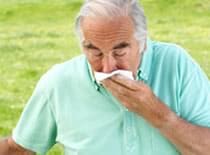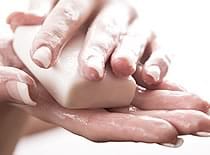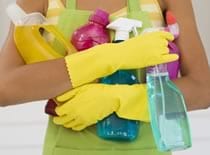Here's the second part of the Swine Flu FAQ obtained from CDC website.This part will have FAQ on prevention and treatment as well as dealing with contamination of the virus. Here is also the first time I heard about the "Swine Flu Parties" LOL! If you don't know what it is, read on and you'll find the answer. All I have to say is there are all sorts of people in this world LOL! Anyway, here goes:-Prevention & Treatment
What can I do to protect myself from getting sick? There is no vaccine available right now to protect against this new H1N1 virus. There are everyday actions that can help prevent the spread of germs that cause respiratory illnesses like influenza.
Take these everyday steps to protect your health:
- Cover your nose and mouth with a tissue when you cough or sneeze. Throw the tissue in the trash after you use it.
- Wash your hands often with soap and water, especially after you cough or sneeze. Alcohol-based hand cleaners are also effective.
- Avoid touching your eyes, nose or mouth. Germs spread this way.
- Try to avoid close contact with sick people.
- Stay home if you are sick for 7 days after your symptoms begin or until you have been symptom-free for 24 hours, whichever is longer. This is to keep from infecting others and spreading the virus further.
Other important actions that you can take are:
- Follow public health advice regarding school closures, avoiding crowds and other social distancing measures.
- Be prepared in case you get sick and need to stay home for a week or so; a supply of over-the-counter medicines, alcohol-based hand rubs, tissues and other related items might could be useful and help avoid the need to make trips out in public while you are sick and contagious.
 What is the best way to keep from spreading the virus through coughing or sneezing?
What is the best way to keep from spreading the virus through coughing or sneezing?
If you are sick, limit your contact with other people as much as possible. If you are sick, stay home for 7 days after your symptoms begin or until you have been symptom-free for 24 hours, whichever is longer. Cover your mouth and nose with a tissue when coughing or sneezing. Put your used tissue in the waste basket. Then, clean your hands, and do so every time you cough or sneeze.
What is the best technique for washing my hands to avoid getting the flu?
Washing your hands often will help protect you from germs. Wash with soap and water or clean with alcohol-based hand cleaner. CDC recommends that when you wash your hands -- with soap and warm water -- that you wash for 15 to 20 seconds. When soap and water are not available, alcohol-based disposable hand wipes or gel sanitizers may be used. You can find them in most supermarkets and drugstores. If using gel, rub your hands until the gel is dry. The gel doesn't need water to work; the alcohol in it kills the germs on your hands.
What should I do if I get sick?
If you live in areas where people have been identified with new H1N1 flu and become ill with influenza-like symptoms, including fever, body aches, runny or stuffy nose, sore throat, nausea, or vomiting or diarrhea, you should stay home and avoid contact with other people, except to seek medical care.
If you have severe illness or you are at high risk for flu complications, contact your health care provider or seek medical care. Your health care provider will determine whether flu testing or treatment is needed
If you become ill and experience any of the following warning signs, seek emergency medical care.
In children, emergency warning signs that need urgent medical attention include:
- Fast breathing or trouble breathing
- Bluish or gray skin color
- Not drinking enough fluids
- Severe or persistent vomiting
- Not waking up or not interacting
- Being so irritable that the child does not want to be held
- Flu-like symptoms improve but then return with fever and worse cough
In adults, emergency warning signs that need urgent medical attention include:
- Difficulty breathing or shortness of breath
- Pain or pressure in the chest or abdomen
- Sudden dizziness
- Confusion
- Severe or persistent vomiting
- Flu-like symptoms improve but then return with fever and worse cough
Are there medicines to treat infection with this new virus?
Yes. CDC recommends the use of oseltamivir or zanamivir for the treatment and/or prevention of infection with the new H1N1 flu virus. Antiviral drugs are prescription medicines (pills, liquid or an inhaler) that fight against the flu by keeping flu viruses from reproducing in your body. If you get sick, antiviral drugs can make your illness milder and make you feel better faster. They may also prevent serious flu complications. During the current outbreak, the priority use for influenza antiviral drugs during is to treat severe influenza illness.
What is CDC’s recommendation regarding "swine flu parties"?
"Swine flu parties" are gatherings during which people have close contact with a person who has novel H1N1 flu in order to become infected with the virus. The intent of these parties is to become infected with what for many people has been a mild disease, in the hope of having natural immunity to the novel H1N1 flu virus that might circulate later and cause more severe disease.
CDC does not recommend "swine flu parties" as a way to protect against novel H1N1 flu in the future. While the disease seen in the current novel H1N1 flu outbreak has been mild for many people, it has been severe and even fatal for others. There is no way to predict with certainty what the outcome will be for an individual or, equally important, for others to whom the intentionally infected person may spread the virus.
CDC recommends that people with novel H1N1 flu avoid contact with others as much as possible. They should stay home from work or school for 7 days after the onset of illness or until at least 24 hours after symptoms have resolved, whichever is longer.
Contamination & Cleaning
 How long can influenza virus remain viable on objects (such as books and doorknobs)?
How long can influenza virus remain viable on objects (such as books and doorknobs)?
Studies have shown that influenza virus can survive on environmental surfaces and can infect a person for up to 2-8 hours after being deposited on the surface.
What kills influenza virus?
Influenza virus is destroyed by heat (167-212°F [75-100°C]). In addition, several chemical germicides, including chlorine, hydrogen peroxide, detergents (soap), iodophors (iodine-based antiseptics), and alcohols are effective against human influenza viruses if used in proper concentration for a sufficient length of time. For example, wipes or gels with alcohol in them can be used to clean hands. The gels should be rubbed into hands until they are dry.
What surfaces are most likely to be sources of contamination?
Germs can be spread when a person touches something that is contaminated with germs and then touches his or her eyes, nose, or mouth. Droplets from a cough or sneeze of an infected person move through the air. Germs can be spread when a person touches respiratory droplets from another person on a surface like a desk, for example, and then touches their own eyes, mouth or nose before washing their hands.
How should waste disposal be handled to prevent the spread of influenza virus?
To prevent the spread of influenza virus, it is recommended that tissues and other disposable items used by an infected person be thrown in the trash. Additionally, persons should wash their hands with soap and water after touching used tissues and similar waste.
 What household cleaning should be done to prevent the spread of influenza virus?
What household cleaning should be done to prevent the spread of influenza virus?
To prevent the spread of influenza virus it is important to keep surfaces (especially bedside tables, surfaces in the bathroom, kitchen counters and toys for children) clean by wiping them down with a household disinfectant according to directions on the product label.
How should linens, eating utensils and dishes of persons infected with influenza virus be handled?
Linens, eating utensils, and dishes belonging to those who are sick do not need to be cleaned separately, but importantly these items should not be shared without washing thoroughly first.
Linens (such as bed sheets and towels) should be washed by using household laundry soap and tumbled dry on a hot setting. Individuals should avoid “hugging” laundry prior to washing it to prevent contaminating themselves. Individuals should wash their hands with soap and water or alcohol-based hand rub immediately after handling dirty laundry.
Eating utensils should be washed either in a dishwasher or by hand with water and soap.
Thus ends the two parts of the FAQ obtained from CDC. In the next post I will include a FAQ from a more local source that is more applicable to Malaysian.
TOP OF PAGE









